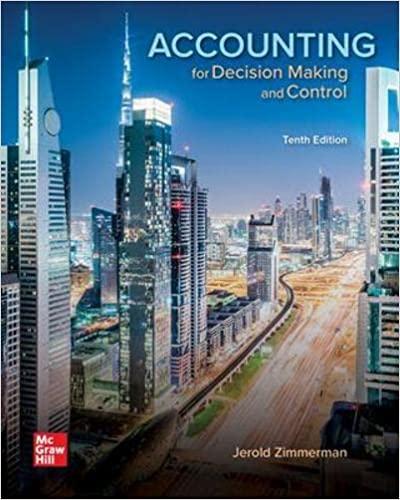Question
1. Control tests are required for A. analytical review of financial statement balances. B. accomplishing control over the validity of recorded transactions. C. obtaining evidence
1. Control tests are required for
A. analytical review of financial statement balances.
B. accomplishing control over the validity of recorded transactions.
C. obtaining evidence about the financial statement assertions.
D. obtaining evidence about the operating effectiveness of company control procedures.
2. On the basis of audit evidence gathered andevaluated, an auditor decides to increase the assessed level of control risk from that originally planned. To achieve an overall audit risk level that is substantially the same as the planned audit risklevel, the auditor would
A. decrease substantive testing.
B. increase inherent risk.
C. decrease detection testing.
D. increase materiality.
3. Which of the following statements is true relating to internal controltesting?
A. as the work of testing of controlsincreases, the cost of substantive work increases
B. substantive testing is the most costefficient way of designing each audit
C. there is a point where further testing of controls becomes more expensive than performing substantive tests
D. testing of controls is the most costefficient way of designing each audit
4. One approach to audit through the computer to test controls is to
A. reprocess live data and have the auditor compare the output with the previous output.
B. trace outputs to source documents to ensure documents have been processed correctly.
C. use simulated data in an audit program to determine if similar controls are being used.
D. reprocess live data with generalized audit software.
5. When the auditor identifies opportunities for the client to make operational improvements in the internal controlsystem, it will be communicated to theclient's audit committee in the
A. management letter.
B. engagement letter.
C. audit report.
D. reportable conditions letter.
6. A secondary objective of theauditor's study and evaluation of internal control is that the study and evaluation provide
A. a basis for reliance on the accounting system.
B. an assurance that the records and documents have been maintained in accordance with existing company policies and procedures.
C. an indication that management and employees are trustworthy.
D. a basis for constructive suggestions concerning improvements in internal control.
7. The SarbanesOxley Act requires management to certify that it has informed the auditor and audit committee of any
A. specific business or industry risk.
B. significant deficiencies in business practices.
C. related party transactions.
D. significant deficiencies in internal controls.
8.The Sarbanes Oxley Act has had consequences for many areas of corporateactivities, including the following impact on the work of theauditor:
A. The auditor is now required to report all fraudulent activitieshe/she uncovers directly to the Securities and Exchange Commission.
B. The auditor must create a report verifying the information in the financial statements.
C. The auditor must monitor how well management is carrying out its financial reporting responsibilities.
D. The auditor is specifically required to evaluate the internal controls used by management to prepare financial information.
9. Paul is in the process of performing procedures to obtain the necessary understanding of theclient's internal controls. As part of thisprocess, Paul received from the client completednarratives, flowcharts, and internal control questionnaires. Paul can use this information from the client
A. if there has not been any significant change in the internal controls since the prior year.
B. if the entitylevel controls and tone at the top were found to be effective.
C. as long as any subsequent reliance on controls is adequately substantiated with testing.
D. since it was prepared bymanagement, which is unbiased.
10. Control tests are required for
A. obtaining evidence about the financial statement assertions.
B. obtaining evidence about the operating effectiveness of company control procedures.
C. accomplishing control over the validity of recorded transactions.
D. analytical review of financial statement balances.
Step by Step Solution
There are 3 Steps involved in it
Step: 1

Get Instant Access to Expert-Tailored Solutions
See step-by-step solutions with expert insights and AI powered tools for academic success
Step: 2

Step: 3

Ace Your Homework with AI
Get the answers you need in no time with our AI-driven, step-by-step assistance
Get Started


